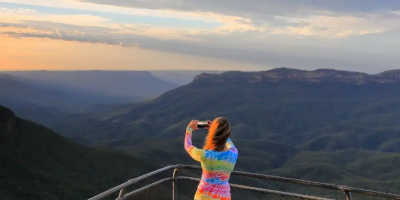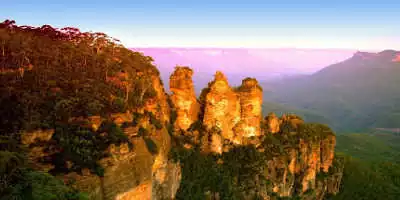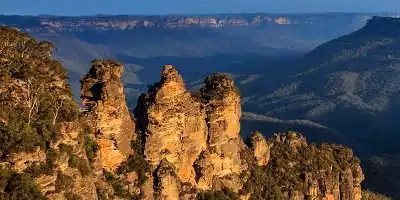
The Kookaburras of the Blue Mountains
Written by: Cameron Ward
Published: 01/23/2017
Reading time: 3 mins
Learn about one of Australia’s most beloved bird species!
The Blue Mountains are renowned for their abundance of plant and animal species, particularly the bird life on offer. Here, hundreds of species call the lush rainforest and surrounding valleys their home, including one of the country’s most beloved bird; native Australian kookaburra.
These birds are like tree-dwelling versions of the kingfisher who have a loud call sound that’s reminiscent of human laughter – hence their name, which comes from the Wiradjuri people’s name guuguubarra, which mimics the sound the birds make.
The Habitat and Different Species of the Kookaburra
Kookaburras live in a variety of different landscapes, ranging from the humid depths of rainforests to the dry and arid plains of grasslands. You might also find them in suburban areas, too, where there are tall trees and running water. Within the Blue Mountains, they are found throughout, due to the entire region crammed with tall trees perfect for the birds.
There are several different species of kookaburra which can be found in the Blue Mountains and around Australia, including the Rufous-belled kookaburra, the Spangled kookaburra, the Blue-winged kookaburra, and the laughing kookaburra.
The Behaviour of the Kookaburra
Kookaburras are almost exclusively meat eaters, opting to dine on things like mice, snakes, insects, and small reptiles. In suburban areas, they have even been known to steal a goldfish or two from garden ponds. The employ the ‘sit and wait’ strategy of hunting, catching their prey by waiting patiently until it passes by and then swooping down from their high perches to pounce.
The birds can be particularly sociable too, taking food from people’s hands and meat from summer barbecues, but they are also very territorial. Their laughing is all due to them being quite territorial creatures. Using their song with fellow family members to mark their domain and letting other kookaburras know where their land ends and begins.
Kookaburras and Australian Culture
Because they are a native species of Australia, the kookaburra has become an icon in much of the country’s culture. For example, in the 2000 Olympics in Sydney, the kookaburra became one of the three mascots alongside the echidna and the platypus.
Elsewhere, the kookaburra’s laugh has been used extensively in films – particularly Disney movies – regardless of where they’re set – the cackling laughter of its call makes for a good soundtrack to rainforest scenes. The kookaburra has also taken centre stage in a number of musical creations in Australia and beyond, including “Kookaburra”, a children’s song dedicated to the bird, and several chart hits from the country.
Getting to know Australia’s expansive collection of native species is an integral part of visiting the Blue Mountains, and the common sightings of kookaburras means you can learn more about their behaviour, habitat, and history in the country while exploring the stunning surrounds of this part of Australia.
How you can see Kookaburras in the Blue Mountains
All you need to do is simply look up! Head along one of the many walking trails weaving through the deep bushland of the Blue Mountains, and you most likely will come across at least one Kookaburra. If you haven’t had any luck, you can even head to the nearby Featherdale Wildlife Park for a guaranteed sighting of the creatures, with this wildlife park home to a number of native birds and animals.








